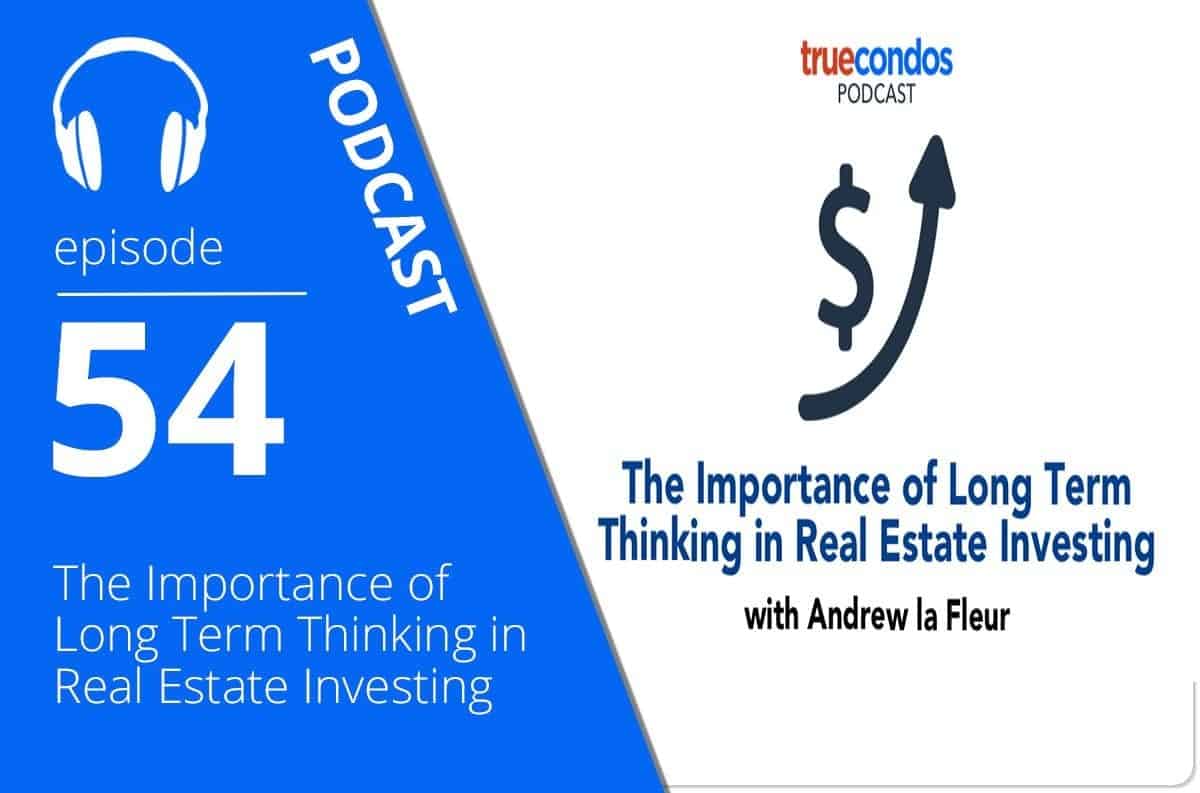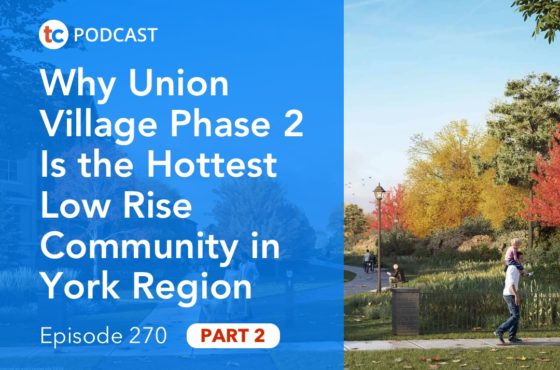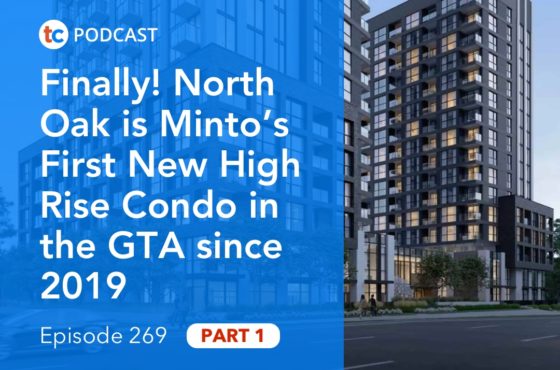The Importance of Long Term Thinking in Real Estate Investing

My old uncle said something very interesting to me recently when discussing current world events like the Greek crisis, Chinese economy losing steam, and low oil prices: “You have to think in centuries”. These things are all small blips on the radar in the bigger picture of world events and history. And the same is true for real estate investors. Too often we get caught up in the day to day and lose site of the long term. We need to focus on buying in locations that will be great 25 years from now, and not worry about what’s happening in the next 1,2,3 years.
Related Links
Episode Transcript
I was doing some traveling recently and I was visiting some of my relatives in Europe and I was having a chat with one of my older uncles. He’s an older man, a distinguished gentleman. He had a long and prestigious business career. We were talking about the economy and what’s happening in the world today and I was asking him what his thoughts were on the situation with Greece, China and oil prices and some things like that and I was saying, “Are you worried about stuff like this?” He’s still an active investor himself in the market, some things, and I was asking him, “What do you think about what’s happening in the world? Are you worried about things like this?”
He said something very interesting to me and it just really got me thinking. His response was basically, “No, no, no. You got to think in centuries.” That’s what he said. Some of what he meant might have been lost in the translation somewhat granted.
I think what he meant when he said you must think in centuries is that a lot of these so-called crises that we’re facing today in the world and the economy and looking at Canada and what’s happening here more locally, oil prices and the Bank of Canada, lowering interest rates by a quarter of a percentage point, I think his point was very wise and it definitely comes from somebody with a lot of experience and that is you got to look at the bigger picture. You got to think long term. When you start looking myopically, when you start micromanaging your perspective, so to speak, on the economy, on the markets, you start to lose perspective.
We need to do the same thing as real estate investors, so I want to encourage you with this podcast this week to think in centuries as it were as my great uncle would term it. You don’t want to get caught up with little bleeps here and there in the economy. Right now things are quite good, granted. Things are moving along very well. The bumps in the road always come. We always have ups and downs as real estate investors, but the most successful investors are those who are taking the long term approach, are those who are thinking strategically and they have a plan and they stick to it over the long term.
Those who are flippant here and there and when the slightest little news, oh there’s an interest rate change or oh there’s a lot of condos that were registered on the market this quarter or this one builder and this one building is having a hard time selling units. Is the sky falling? This kind of thinking is really short term focused and it’s really missing the bigger picture.
I want to encourage you to look at the bigger picture. I want to encourage you to think longer term and I want to give you a few examples of what I mean by that on this podcast today and this quick episode I’m bringing you this week.
Another quote to help you think about it, I think it’s from Warren Buffet, I’m 90% sure it is but somebody email me and correct me if I’m wrong. Basically, Warren Buffet, famous investor that he is, quoted investor, he says the type companies that he invest in basically come down to if it looks like a good company today, that’s one thing, but he invests in companies that will still be a good company 25 years from now.
That’s another interesting way to think about it even if you are a stock investor. I’m definitely not. If you think about real estate, if you’re buying a condo or a property, is this condo that you’re buying today going to be a good, probably better, much better property 25 years from now than it is today? When you start thinking like that, it might affect how you make your decisions a little bit differently.
For example, if you’re being offered a condo in some outlying area of the city in some forgotten corner of some suburb or something and there’s some great deal one-night only, things like that, ask yourself, “Is this going to be a better or a great area 25 years from now? Is this going to be a great location 25 years from now? Is there infrastructure coming in place that is going to dramatically transform this area into something much more than it is right now?”
These are the kind of questions you want to ask yourself and I think a lot of times people make bad decisions on where to invest, especially in condos, based on price because if something looks cheap then therefore it’s a good investment is the reasoning. I think what those people find often is over the long term that there’s a reason those things are cheap. There’s a reason why certain properties are cheap.
If you want to go back to another podcast, listen to my interview with Don Campbell, well-known expert on real estate investing, and listen to him about some of the mistakes that he made earlier in his career. I think that might resonate with you as well.
I want to get back on track here and give a few examples of what I mean by thinking in centuries or maybe not centuries in the case of real estate investing, condo investing, but definitely at least thinking in terms of decades. What’s happening in the next decade as opposed to what’s happening a year after.
The first example is Yonge and Eglinton. To me this one is just blatantly obvious but, for some reason, so many people are missing out or not understanding what’s happening at Yonge and Eglinton. The $5 billion investment of the LRT should be enough alone for people to understand that this is a great, great place to invest today before this LRT is completed. Again, you look at other cross sections of the transit network. If you were able to invest in those areas five, six, seven years before that was completed, that’s where the money is to be made, not the ones that’s already in place.
The time to buy Yonge and Eglinton, again in my opinion, is now. I think that area is essentially one of the top three, four, five, neighborhood in the city today and 25 years from now, in terms of Warren Buffet’s timing, I know 100% it’s going to be much, much better neighborhood than it is right now. It’s not even going to take that long, that’s the beauty of it.
Once this LRT comes in it’s really going to speed up the transformation of the entire Eglinton Corridor and of course Yonge and Eglinton is the heart of it. Yonge and Eglinton is the center of it. It’s the bull’s eye. It’s where you want to be. If you’re anywhere in Eglinton you might as well be in Yonge and Eglinton.
To me that’s a sleeper. A lot of people don’t understand the upside that is coming there because it’s not right in front of them. It’s a little bit more subtle. You have to understand it, the neighborhood a little bit deeper and I think a lot of people just have never been to Yonge and Eglinton.
Again, I encourage you, if you’re thinking about getting into the market, if you’re considering different areas, definitely, definitely, definitely consider downtown first of all, core of the city, but second, to me right now second place would probably be Yonge and Eglinton.
Take a look at that area. Spend some time there. Walk up and down Yonge Street and Eglinton. Walk into the side streets. Take a few hours of your day. Do yourself a favor and get to know Yonge and Eglinton if you have never been there before. If you’ve already been there then you know what I’m talking about and all you got to do is get out there, get investing.
The second example I want to give you of this concept is the Waterfront Toronto. Right now I would say for the most part the Waterfront is crap. We’ve messed up our Waterfront for decades and decades, but time is coming. The momentum is there. The political will is there. Waterfront Toronto has been in place for a number of years. The plan is there. It’s starting to come together.
The new Queens Quay section, which was just opened up, gives us a very good indication and a very nice taste of what’s to come for the entire Waterfront area and is looking very, very nice. The Waterfront of Toronto will become a very, very desirable place to live in the decades to come. Definitely, definitely, definitely keep the Waterfront on your radar this year, next year, in the next couple of years and again, now is the time to take a look at that area before it’s all built out.
Look at the East Bayfront, the entire East Bayfront is a giant master plan community which is just starting to be coming together with some of the buildings that are completed. The East Bayfront area is really starting to get a sense of what’s happening there. Daniels Waterfront of course coming up this fall is going to be a big important piece of that puzzle as well. The Waterfront in Toronto would be another area where you definitely don’t want to miss out on that and sleep on that because that is going to be a fantastic area to live, to work and to play in the years to come.
The third the example I want to give you are unit sizes. It’s basically you want to spread the spectrum. You want to think small but you also want to think big. What I mean by that is small units. That’s been my bread and butter and my advice to my clients for the last better part of a decade now is go small. The small units are the future.
People who say are, “These units are too small,” or, “How can anybody live in a space like this,” or, “Oh, this condo is as big as my closet,” forget about those people. They do not understand the condo market. They do not understand the dynamics of city living. Most likely they’ve never traveled anywhere outside of Canada. I hate to say it, but there’s a lot of ignorance behind those types of comments, in my opinion, and they just not understand the reality of what’s happening in this city. What kind of a city it is becoming. Not just Toronto.
This is a global phenomena. We are seeing people move into cities at an unprecedented rate across the word and Toronto was no exception. People love to live close to work and close to amenities and they want to have a high quality of life, which basically comes down to they don’t want to drive. People do not want to be in cars.
It all translates into urban, dense city living, which translates into more and more expensive pricing which turns into smaller and smaller units which are cheaper and more affordable, will always be in demand. There will always be a market for smaller units both on the rental side and also resell side.
Affordability is a very good thing. Again, if you go around a lot of the cities in the world it’s very hard to find affordable real estate. If you listen to my podcast with Jeanhy Shim we talked about this. Look for the podcast with Jeanhy Shim from Housing Lab Toronto. We talked about how unique Toronto is because we do have affordable housing in the downtown and the core of the city where average people can actually live, afford to purchase and to rent properties that are just few minutes walk away from the financial core of one of the best economies in the entire world. That’s a very good thing.
Small units are still good. I am still bullish on small units. I’m not going to veer away from that despite what naysayers are saying. The other side of it I said is big units. Think small and think big on the other side of the spectrum. I’m not contradicting myself. I’m actually just pointing out the fact that bigger units are also very important. It’s the stuff in the middle that you really get squeezed on and you want to avoid the middle side stuff. Small units are great.
Smaller sizes of a given type of unit, as I always say, but bigger units are starting to become more and more important as well for families. People who are getting married and having kids they cannot afford housing in Toronto, low-rise housing. That dream is slowly dying for many, many people and it’s growing every single month.
These prices of low-rise housing continues to go up, so more and more people are going to be looking at two-bedroom and three-bedroom condos to live in not just for one or two years but now they’re going to be saying, “I’m going to be living in this for five, six, seven years. I might have one or two kids in the unit before I eventually move out into a house.” Bigger units should be an important part of any investor’s portfolio as well as the small stuff. Again, that’s thinking longer term, big picture, what’s happening.
Finally, the fourth example I want to give of this concept of thinking in centuries, thinking long term, what we want to do as real estate investors, the fourth concept is invest in the downtown core. I talk about this all the time, but bread and butter of where you want to be as an investor, not 100% all the time, but most of your portfolio, in my opinion, as a condo investor you want to be in the down core of [inaudible 00:15:11]. You want to be close to transit subway, financial district, jobs, jobs, jobs.
You want to be in the core of everything. For the simple reason that supply of land is very limited. It’s getting less and less every single year. The density is increasing every single year. Prices of land just keep going up, therefore the prices of property and the price per square foot of these condos will follow as well.
The other thing that’s interesting is if you look at Toronto versus other cities, something I’m starting to track and I’d like to do more research on it, but something I’m tracking to let you know is the suburbs to downtown price ratio in Toronto versus other cities in the world, other big cities. In most big cities there’s a huge, huge difference in prices from the downtown core minutes to the financial center and everything downtown to the suburban areas. An hour to an hour and a half outside of the downtown core. We do not see that in Toronto. It’s very interesting.
Again, a lot of people are buying condos in suburban areas and things for approximately $500 a square foot, [inaudible 00:16:35] in July of 2015 when we’re recording the podcast, and you can still get great real estate in the core of Toronto for about $600 a square foot. It’s a very marginal difference, $500 to $600 a square foot. You go to other cities, New York, cities like that, the ratio or the difference is staggering. It’s more like $2,000, $3,000 a square foot versus $500, $600 a square foot. It’s a multiple factor. It’s not an incremental difference.
That is just going back to my belief. This is more anecdotal than anything, but I’ll go out there and say that I believe that this ratio, again, in the long term, if we’re thinking long term, that ratio is going to look more like New York City type of a ratio than it does what it is right now which is just a slight incremental difference. The growth is going to come in the downtown core. The suburban areas will grow but at a much slower pace and that’s not rocket science. It shouldn’t be news to anybody. That is a pattern that we’ve seen over many decades that the downtown core is going to grow faster than the suburban areas.
That is my podcast for this week. I hope you enjoyed that. I hope it wasn’t too esoteric for you. I tried to bring it home with some real-life concrete examples of what I’m talking about. I hope that helps you as investor to think long term, think in centuries, as my great uncle would say. Until next time. I hope you have a great week. Thanks for listening to the podcast. Talk to you soon.
Thanks for listening to the True Condos Podcast. Remember, your positive reviews make a big difference to the show. To learn more about condo investing, become a True Condo subscriber by visiting truecondos.com.



